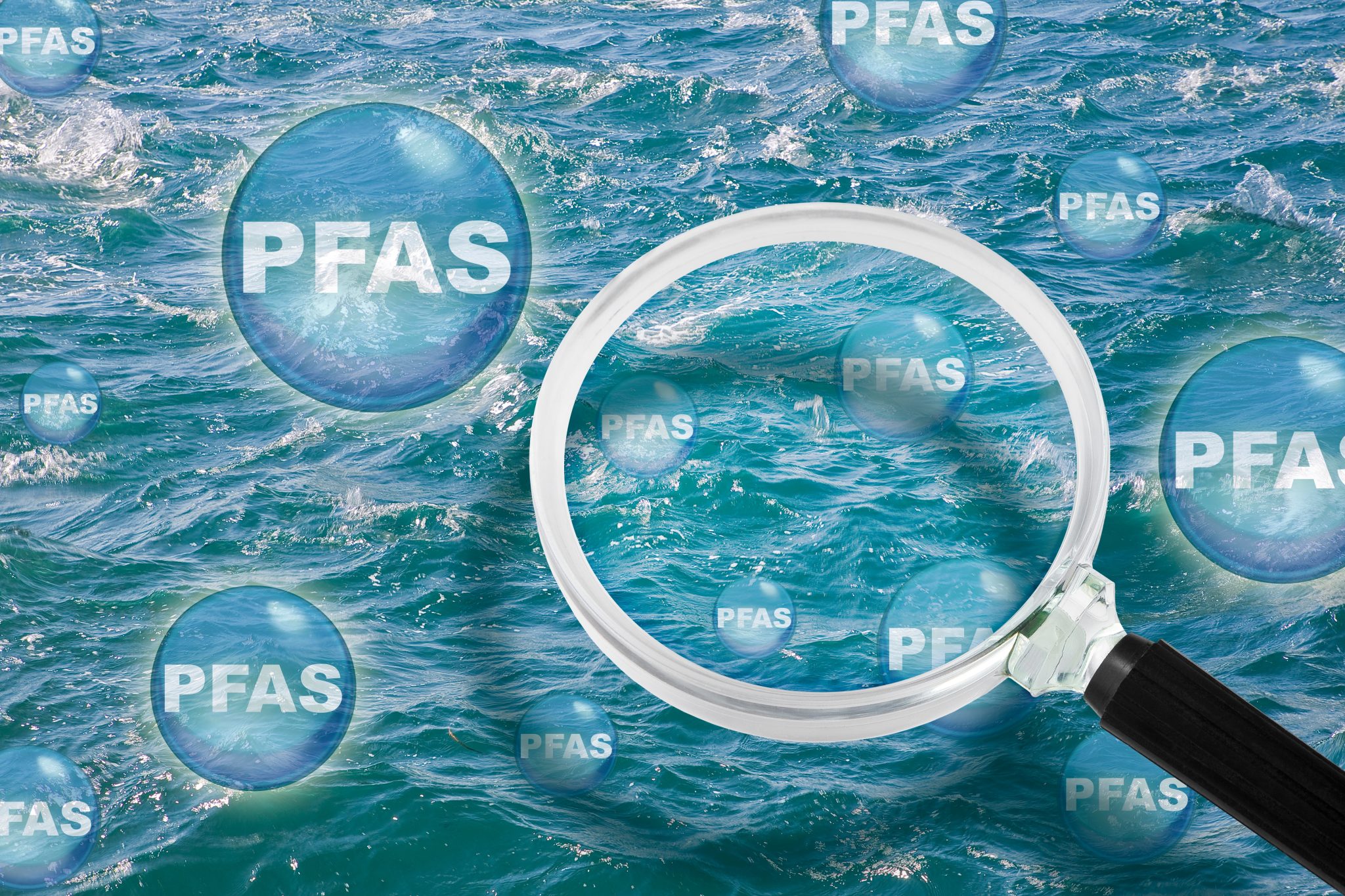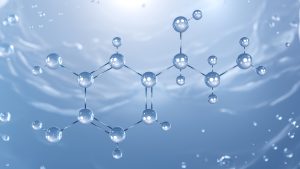As global water demand rises and natural freshwater sources become increasingly scarce, .
PFAS Removal: What Will Change in the Next 3 Years

What’s all the fuss about PFAS?
PFAS stands for Per- and Poly-Fluoroalkyl Substances, a group of more than 14,000 widely used synthetic, man-made chemicals. They all contain carbon-fluorine bonds, which are one of the strongest chemical bonds in organic chemistry, they are not easy-degradable and remain in the environment. As a result, they are widely considered as “forever chemicals”. When people consume PFAS, it concentrates and accumulates in their blood, depending on the PFAS chain length, it may take the body years to dispose of it. For this reason, even a very small contamination of PFAs can result in significant harm. Some of the health issues attributed to PFAS exposure include kidney cancer, testicular cancer, ulcerative colitis, thyroid disease, high cholesterol, and preeclampsia.
What’s the challenge with PFAS removal?
Let’s get technical for a second. EPA uses the following definition for PFAS:
Per- and Polyfluorinated Substances that structurally contain the unit R-(CF2)-C(F)(R’)R’’ where both the CF2 and CF moieties are saturated carbons and none of the R groups (R, R’, or R’’) can be hydrogen.
The carbon-hydrogen bond is one of the strongest known and the bond is stronger with increasing replacement of hydrogen by fluorine at each carbon. As such the more substituted the PFASs are, the less reactive (i.e. more chemically inert) they become.
PFASs in general can withstand heat, acids, bases, reducing agents, oxidants, as well as photolytic, microbial, and metabolic degradation processes.
PFAS are found in rivers, lakes, and reservoirs all over the world. The highest levels of PFAS contamination are found in industrial and urban areas, as well as in areas with a high population density. PFAS treating projects are already underway and include cleanup of municipal wastewater treatment water, prior to discharge (recycling back into the environment), cleanup of industrial wastewater prior to being discharged into a receiving body and treatment of municipal drinking water that has been contaminated with PFAS.

What are some common PFAS Removal Technologies?
EPA has identified the following as best available technologies:
Granular Activated Carbon (GAC):
GAC can remove low concentrations (ng/L) of PFAS from drinking water. GAC efficiently treats longer PFAS chains but is less efficient for treating the short-chain PFAS. The presence of other organic matters may reduce the GAC adsorption efficiency. The carbon media may be recycled for use elsewhere after the PFAS is burned off.
Ion-Exchanger (IX):
An ion-exchanger is efficient for the removal of anionic and long-chain PFAS at low concentrations (ng/L). Adsorption capacity is higher compared to GAC and the adsorption kinetics is faster. It is less efficient for water containing organic or inorganic matter and is limited in removal of short-chain PFAS. The media is typically used once, following which it needs to be disposed of.
Membrane (RO/NF):
Membrane technology is effective for short-chain as well as long-chain PFAS. Other organic and inorganic impurities are also removed. This method both has a high removal rate. The energy requirement for membrane wastewater treatment is high compared to adsorption or ion exchange resin.
It is important to mention that unlike with GAC or IX in which the PFAS is adsorbed on a solid matter that needs to be disposed of, for RO/NF, the PFAS is concentrated in the brine stream which means that a liquid stream needs to be disposed of.
The problem with PFAS is that not all PFAS chemicals are created alike. The amount of carbons dictate the size of the molecule. The C8 group of molecules which have eight carbons can be removed by GAC or by ion exchange or by nanofiltration. But the C4 molecules, (with only four carbons), are much harder for GAC to remove. So when we think about PFAS removal technologies, we need to understand what type of PFAS we’re aiming to remove. And the added bonus? Only 6 of the 14,000 molecules are currently regulated by the EPA. These 2 main molecules (PFOA and PFOS) were the first to be developed some 50 years ago, and they have been proven to cause harm to human health.
How do you dispose of “Forever Chemicals”?
Another problem involving PFAS removal technology is that at the end, even if it removes the PFAS, it still stays there. GAC or Ion Exchange removal technologies absorb the PFAS but at a certain point you need to dispose of them somehow. Current regulation allows disposal at landfills but most companies won’t do it because they’re afraid that future regulation might make them liable for ground water PFAS contamination. What do they do instead? They send it to incineration, burning it completely at a very high temperature, which is the only way to break these forever chemical molecules.
When using reverse osmosis or nanofiltration, the concentrated PFAS accumulates in the waste stream, the brine. Nowadays these waste streams are sent into deep well injection; they are injected back into the ground to a lower level below the aquifer. The underground water which is pumped for usage. Yet again this does not seem to be a great solution and it is most likely that future regulation will address it as well.
PFAS Removal Solutions – What’s next?
On the technological and R&D front, the future is really about developing technologies that will concentrate the PFAS or break them (known as Concentration & Destruction). Chemists worked really hard to create this unbreakable chemical, but now, when we understand the damage that it causes, we need to find a way to break it.
In terms of regulation, in late 2021, the EPA laid out a new PFAS Strategic Roadmap in which it slated the proposal of new federal drinking water standards (NPDWR – National Primary Drinking Water Regulations) for two PFAS chemicals – PFOA and PFOS, the Strategic Roadmap was released on March 2023 and is planned to be finalized in 2024. The EPA is already testing additional 29 PFAS molecules and I doubt it will end there.
Although there are currently no enforceable federal drinking water standards for any PFAS compounds, state legislation and regulations pertaining to PFAS have increased in recent years in response to cases of contamination across the country. To date, 11 states have set their own drinking water standards through a combination of legislative, regulatory, and advisory body actions.
In Europe, PFOS & PFOA were phased out and have now been restricted under the EU POP (Persistent Organic Pollutants) regulations thus, manufacture, import and export are largely prohibited. In late 2020 an amendment was made in the EU Quality of Water Directive minimizing PFOS & PFOA levels in drinking water, according to the Directive each state member must enact regulations that will enter into force in 2026.
As the landscape surrounding PFAS treatment undergoes significant transformation, the ripple effects are poised to impact various sectors profoundly. Industries reliant on PFAS compounds may face heightened scrutiny and regulatory pressures. Governments, both at local and federal levels, are likely to respond with stricter policies aimed at safeguarding public health and environmental integrity.
Public pressure will continue to exert a significant influence on the trajectory of PFAS management strategies. Heightened awareness and advocacy from communities affected by PFAS contamination will drive demands for swift action and comprehensive solutions.
And in terms of the actual on the ground impact, a lot of municipalities and water authorities and suppliers will need to install treatment solutions to remove the PFAS from the water and safeguard the health of their communities.
Learn more about PFAS removal technologies in this webinar.

















